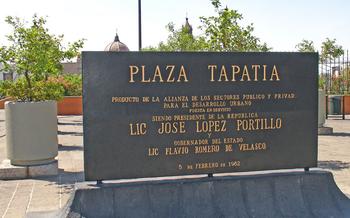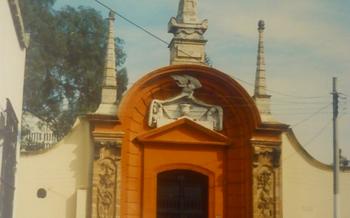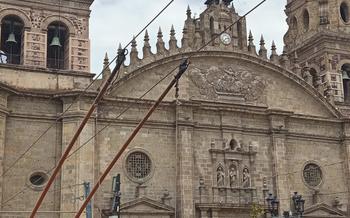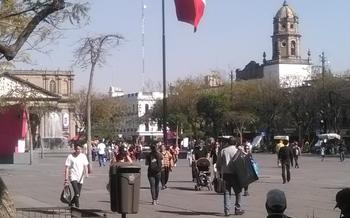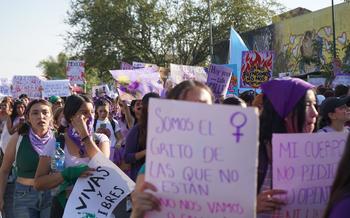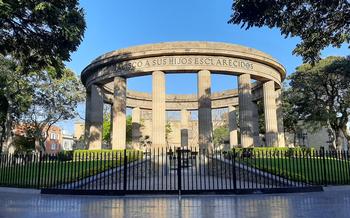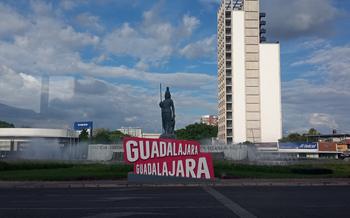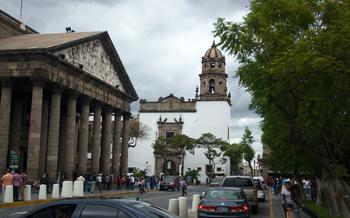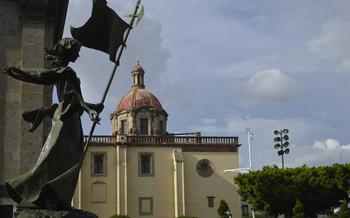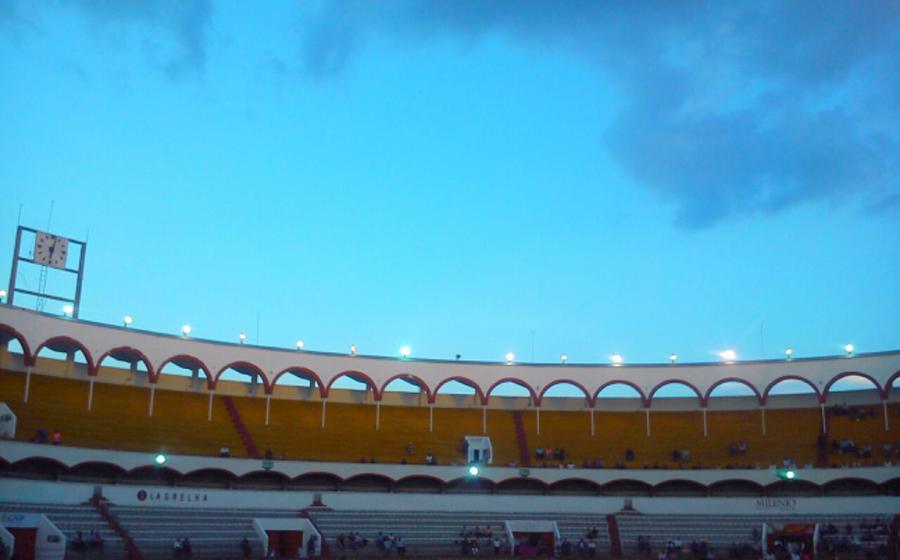
Plaza de Toros Nuevo Progreso
- The Plaza de Toros Nuevo Progreso: A Legacy of Tradition
- Immerse in the Spectacle: The Bullfight Experience
- Behind the Scenes: The Journey of a Bull
- Beyond the Ring: Exploring the Plaza's Cultural Significance
- A Sensory Overload: The Ambiance and Atmosphere
- The Art of the Matador: Skill, Grace, and Precision
- Bulls of Renown: Encountering Legendary Breeds
- Safety First: Ensuring a Humane Spectacle
- Beyond the Main Event: Exploring the Plaza's Surroundings
- Capturing the Spectacle: Photography and Videography Guidelines
- A Culinary Journey: Savoring Local Delights
- Language and Cultural Etiquette: Navigating the Local Customs
- Making Memories: Capturing the Essence of the Bullfight
- Insider Tip: Unveiling Local Bullfighting Traditions
The Plaza de Toros Nuevo Progreso: A Legacy of Tradition
Bullfighting, a spectacle steeped in history and tradition, holds a significant place in Mexican culture. Dating back to the colonial era, this controversial yet captivating art form has left an indelible mark on the nation's identity. The Plaza de Toros Nuevo Progreso, located in the vibrant city of Guadalajara, stands as a testament to this enduring legacy. Constructed in 1967, this iconic bullring, with its Moorish-inspired architecture and seating capacity of over 16,000, has become a symbol of Guadalajara's cultural heritage.
Over the centuries, bullfighting has evolved in Mexico, reflecting the country's changing social and political landscape. In the colonial period, bullfights were often held in the main plazas of towns and cities, serving as a form of entertainment and a demonstration of Spanish dominance. After Mexico gained independence, bullfighting continued to be popular, but it underwent significant changes. The introduction of the "toreo a pie," or bullfighting on foot, in the late 19th century, revolutionized the sport, demanding greater skill and agility from the matadors.
Today, bullfighting remains a controversial practice, with debates surrounding animal welfare and the ethics of the sport. However, it continues to hold a strong appeal for many Mexicans, who see it as an integral part of their cultural heritage. The Plaza de Toros Nuevo Progreso stands as a living testament to this enduring tradition, attracting thousands of spectators each year who come to witness the spectacle of bullfighting and experience the unique atmosphere of this historic arena.
Immerse in the Spectacle: The Bullfight Experience
Attending a bullfight in the Plaza de Toros Nuevo Progreso is a captivating experience that plunges you into the heart of Mexican culture. The spectacle unfolds in three distinct stages, each imbued with its own significance.
The first stage, known as the "entrada", showcases the grand entrance of the bullfighters, accompanied by the vibrant sounds of the "pasodoble" music. The matadors, adorned in their elaborate trajes de luces, lead the procession, followed by the picadors on horseback and the banderilleros carrying colorful banderillas.
The second stage, the "lidia", is a test of skill and strategy as the matador engages the bull in a graceful dance of evasion and domination. The matador uses his red cape to manipulate the bull's movements, demonstrating his control and understanding of the animal's behavior.
The final stage, the "faena", is the most intense and emotionally charged part of the bullfight. The matador, armed with a sword, delivers the final blow to the bull, ending its life in a swift and precise motion.
Throughout the bullfight, the crowd erupts in cheers, applause, and occasionally, gasps of awe or disapproval. The atmosphere is electric, charged with anticipation, excitement, and a palpable sense of connection between the participants and the spectators.
Behind the Scenes: The Journey of a Bull
The world of bullfighting involves not just the matadors but also the bulls, who play a crucial role in the spectacle. These animals are carefully bred and selected for their strength, bravery, and temperament. From birth, they are raised in specialized ranches, where they receive meticulous care and training. As they mature, they undergo rigorous physical conditioning to develop the strength and agility required for the ring.
The selection of the bulls for each fight is a significant ritual. A committee of experts carefully evaluates each animal's characteristics, including its size, weight, horn shape, and temperament. The chosen bulls are then transported to the plaza in specially designed trucks, ensuring their safety and comfort during the journey.
Upon arrival at the plaza, the bulls are housed in individual pens, where they are closely monitored and provided with food and water. Each bull is assigned a specific number, which is displayed on a placard outside its pen. This number corresponds to the order in which the bulls will enter the ring.
The process of preparing the bulls for the fight is precise and methodical. They are carefully groomed and their horns are trimmed to ensure they are not too sharp or dangerous. The bulls are also given a light meal and allowed to rest before the fight begins.
Beyond the Ring: Exploring the Plaza's Cultural Significance
The Plaza de Toros Nuevo Progreso transcends its role as a mere bullfighting venue; it has become an integral part of Guadalajara's identity and cultural fabric. Bullfighting is deeply embedded in the city's history, dating back to the colonial era when it was introduced by Spanish conquistadors. Over the centuries, it has evolved into a unique spectacle that reflects the region's distinct traditions and values.
The plaza has witnessed countless bullfights, each contributing to the rich tapestry of Guadalajara's cultural heritage. It has become a symbol of the city's pride, resilience, and passion for this controversial yet captivating spectacle. The plaza has also been a source of inspiration for local artists, writers, and musicians, who have immortalized the bullfight in their works, creating a vibrant cultural dialogue around this controversial tradition.
Beyond its cultural significance, the Plaza de Toros Nuevo Progreso also plays a vital role in promoting tourism in Guadalajara. It attracts visitors from around the world who come to witness the spectacle of the bullfight and experience the city's unique cultural heritage. The plaza has become a symbol of Guadalajara's vibrant and diverse cultural landscape, showcasing the city's deep-rooted traditions and its embrace of modernity.
A Sensory Overload: The Ambiance and Atmosphere
The Plaza de Toros Nuevo Progreso pulsates with a vibrant symphony of sights, sounds, and sensations that create an immersive and intoxicating atmosphere. The arena's vibrant colors, from the scarlet of the matador's cape to the gleaming gold of the ornate detailing, captivate the eye. The air buzzes with anticipation, punctuated by the rhythmic clapping of the crowd and the occasional triumphant fanfare of the trumpet. The scent of freshly cut flowers mingles with the aromatic waft of churros and other local delicacies, tantalizing the senses.
As the bullfight unfolds, a collective gasp ripples through the crowd, a symphony of emotions reverberating through the stands. The spectators, united in their passion for the spectacle, share an unspoken bond, their hearts pounding in unison with the rhythm of the bullfight. This shared experience creates a sense of camaraderie and belonging, transcending differences and forging a connection that extends beyond the confines of the arena.
The bullfight, with its intricate rituals and symbolic gestures, is a living testament to Mexican culture, deeply embedded in the nation's identity. The Plaza de Toros Nuevo Progreso stands as a stage where this cultural heritage is enacted, preserving traditions and providing a glimpse into the soul of Mexico.
The Art of the Matador: Skill, Grace, and Precision
To become a matador requires years of intense training, physical conditioning, and unwavering dedication. Aspiring matadors undergo rigorous instruction in bullfighting academies, honing their skills through countless hours of practice and studying the intricacies of the art form. They learn to analyze the bull's behavior, anticipate its movements, and execute precise maneuvers with grace and agility.
Skill and Technique:
Matadors employ a diverse range of techniques to outmaneuver the bull, each requiring skill, timing, and precision. They use the capote, a colorful cape, to attract the bull's attention and control its movements. The banderillas, barbed sticks adorned with ribbons, are skillfully placed in the bull's shoulders, weakening it and testing its bravery.
Timing and Precision:
The essence of bullfighting lies in the matador's ability to anticipate the bull's movements and react accordingly. They must maintain a delicate balance between aggression and caution, knowing when to advance and when to retreat. The matador's timing must be impeccable, as a single misstep can have serious consequences.
Elegance and Grace:
Bullfighting is not merely a display of brute force but also a performance of elegance and grace. The matador's movements are fluid and rhythmic, resembling a dance with the bull. They strive to execute each maneuver with precision and style, captivating the audience with their artistry and skill.
Bulls of Renown: Encountering Legendary Breeds
The Plaza de Toros Nuevo Progreso has witnessed some of the most legendary fighting bulls in history. These bulls, renowned for their bravery, strength, and temperament, have played a pivotal role in shaping the legacy of bullfighting.
Among the most famous breeds of fighting bulls are the Miura, the Osborne, and the Victorino Martín. The Miura bulls are known for their ferocity and unpredictability, while the Osborne bulls are prized for their nobility and elegance. The Victorino Martín bulls, on the other hand, are renowned for their strength and endurance.
Each bull that enters the ring has its unique characteristics and personality. Some bulls are known for their aggressive charging style, while others are more cunning and strategic. The matadors must carefully study each bull's behavior and adapt their fighting style accordingly.
Encountering a legendary bull in the ring is a rare and unforgettable experience. These bulls possess a combination of power, agility, and intelligence that makes them formidable opponents. Witnessing a bullfight involving a legendary bull is a testament to the skill and courage of the matadors and the majesty of these magnificent animals.
Safety First: Ensuring a Humane Spectacle
The Plaza de Toros Nuevo Progreso adheres to strict safety regulations and protocols to safeguard the well-being of both the bullfighters and the bulls. The arena's design incorporates protective barriers and specialized equipment to minimize the risk of injury during the bullfight. Bullfighters undergo rigorous training and are required to wear protective gear to shield themselves from the bull's horns.
The ethical considerations surrounding bullfighting and animal welfare remain a topic of debate. Critics argue that bullfighting subjects the animals to unnecessary pain and suffering, while proponents maintain that it is a traditional and deeply rooted cultural practice that upholds the values of courage, skill, and respect.
To mitigate concerns and ensure the humane treatment of bulls, various measures have been implemented. Bulls are carefully selected for their strength, agility, and temperament, and are raised in specialized ranches that prioritize their well-being. The use of excessive force or cruelty towards the bulls is strictly prohibited, and veterinarians are present at every bullfight to provide immediate medical attention if needed.
Through these regulations and protocols, the Plaza de Toros Nuevo Progreso strives to balance the preservation of a cherished tradition with the ethical treatment of animals, fostering a responsible and respectful environment for all involved.
Beyond the Main Event: Exploring the Plaza's Surroundings
Your bullfighting experience in Guadalajara doesn't have to end at the Plaza de Toros Nuevo Progreso. The city offers a wealth of attractions and activities that will enrich your visit. Just a short stroll from the plaza, you'll find yourself immersed in the heart of Guadalajara's historic center, a UNESCO World Heritage Site. Explore its cobblestone streets, admire the colonial architecture, and visit landmarks like the Guadalajara Cathedral and the Degollado Theater.
For a taste of local flavors, head to the nearby Mercado Libertad, a bustling traditional market where you can sample fresh produce, regional delicacies, and authentic Mexican street food. Indulge in a torta ahogada, a local specialty consisting of a pork sandwich drenched in a spicy tomato sauce, or savor a refreshing tequila or mezcal at one of the many bars and restaurants in the area.
Guadalajara is also home to a vibrant arts and culture scene. Visit the Instituto Cultural Cabañas, a former orphanage turned cultural center, to admire its stunning murals by renowned Mexican artist José Clemente Orozco. The city also boasts several museums dedicated to bullfighting, such as the Museo Taurino and the Museo del Toreo, where you can delve deeper into the history and traditions of the sport.
Capturing the Spectacle: Photography and Videography Guidelines
Documenting the spectacle of a bullfight through photography and videography can be a rewarding experience, but it's crucial to adhere to the established rules and guidelines at the Plaza de Toros Nuevo Progreso. Photography and videography are generally permitted for personal use, but commercial purposes require prior authorization.
To ensure a respectful and enjoyable experience for all, it's essential to avoid using flash photography, as it can disrupt the bullfight and disturb the participants. Additionally, maintaining a safe distance from the ring is paramount, ensuring that you don't interfere with the bullfight's progress or pose a safety risk.
For those seeking to capture stunning shots, the Plaza de Toros Nuevo Progreso offers designated photography areas that provide optimal vantage points. These areas allow photographers and videographers to capture the action without compromising the safety or integrity of the bullfight.
Beyond technical considerations, it's equally important to be mindful of the cultural significance of bullfighting in Mexico. When photographing or filming, remember to approach the subject with respect and sensitivity, avoiding sensationalism or disrespect. By adhering to these guidelines, you can preserve the essence of the bullfight while contributing to the rich tapestry of memories surrounding this iconic tradition.
A Culinary Journey: Savoring Local Delights
Attending a bullfight at the Plaza de Toros Nuevo Progreso offers a unique opportunity to immerse yourself in the local culinary scene. Food vendors line the Plaza's concourses, offering a tantalizing array of traditional Mexican dishes. From the ubiquitous tacos and tortas overflowing with flavorful fillings to the aromatic quesadillas and enchiladas smothered in rich sauces, there's something to satisfy every palate.
Indulge in the regional specialty of birria, a slow-cooked stew made with goat meat and a complex blend of spices, served with a side of consomé for dipping. For a lighter option, try a refreshing ceviche, a seafood cocktail made with fresh fish or shrimp marinated in citrus juices and herbs.
Don't miss out on the chance to sample the local sweets. Churros, crispy fried pastries coated in cinnamon sugar, are a popular treat, as are buñuelos, sweet fritters often filled with cajeta, a caramel-like sauce. Wash it all down with a refreshing agua fresca, a traditional Mexican drink made from fresh fruit, or a cold beer, the perfect accompaniment to a thrilling afternoon at the bullfight.
By savoring the local cuisine at the Plaza de Toros Nuevo Progreso, you'll not only satisfy your taste buds but also gain a deeper appreciation for the vibrant culinary heritage of Guadalajara.
Language and Cultural Etiquette: Navigating the Local Customs
Visiting the Plaza de Toros Nuevo Progreso offers a rich immersion into Mexican culture. To enhance your experience, embrace the local language and customs. Start by learning essential Spanish phrases like "Hola" (hello), "Gracias" (thank you), and "Por favor" (please). Locals appreciate efforts to communicate in their language.
Respect the cultural etiquette surrounding bullfighting. Avoid using flash photography during the corrida, as it can be distracting to the bullfighters. Refrain from making loud noises or talking excessively during the performance. Applaud politely to show your appreciation for the bullfighters' skills.
Dress appropriately for the occasion. While there is no strict dress code, opt for smart casual attire to blend in with the local crowd. This demonstrates respect for the tradition and the bullfighters.
Remember, bullfighting is a deeply ingrained part of Mexican culture. Engage with locals in respectful conversations to gain insights into their perspectives and experiences. Open-mindedness and curiosity will enhance your understanding of this unique cultural phenomenon.
Making Memories: Capturing the Essence of the Bullfight
Attending a bullfight at the Plaza de Toros Nuevo Progreso is an experience that will stay with you long after you leave the arena. To make the most of this unique cultural event, consider taking home some souvenirs and memorabilia to remember your visit.
The Plaza de Toros Nuevo Progreso gift shop offers a wide variety of items, from traditional bullfighting attire to handcrafted souvenirs. You can purchase a replica of a matador's traje de luces (suit of lights), a banderilla (spear), or a capote (cape). These items make for excellent conversation starters and will remind you of the thrill and excitement of the bullfight.
For a truly special memento, consider purchasing a piece of bullfighting-inspired artwork. Local artisans and craftsmen create unique paintings, sculptures, and ceramics that capture the essence of the bullfight. These pieces of art are not only beautiful but also serve as a reminder of the rich history and tradition of bullfighting in Mexico.
No matter what you choose to purchase, make sure it is something that you will cherish for years to come. A souvenir from the Plaza de Toros Nuevo Progreso is a tangible reminder of an unforgettable experience.
Insider Tip: Unveiling Local Bullfighting Traditions
Beyond the grand spectacle of the bullfights, Guadalajara holds a rich tapestry of local bullfighting traditions that offer a deeper insight into the city's cultural heritage. One such tradition is the "paseo de las cuadrillas," a parade of the bullfighters and their entourage through the streets of Guadalajara before the bullfight. This vibrant procession showcases the matadors in their elaborate costumes, accompanied by musicians and an excited crowd.
Another unique tradition is the "toro embolado," a variation of the bullfight where the bull's horns are covered with protective balls. This allows for a more interactive and playful spectacle, where the bull is not harmed, and the focus is on the skill and agility of the bullfighters as they maneuver around the bull.
To truly immerse in the local bullfighting culture, connect with local aficionados or join a guided tour that delves into the history and traditions of bullfighting in Guadalajara. These experts can share insights into the breeding of fighting bulls, the training of matadors, and the significance of bullfighting in Mexican society.
Remember to approach these traditions with respect and curiosity, and always seek permission before taking photographs or videos. These local customs offer a unique opportunity to connect with the vibrant and passionate bullfighting culture of Guadalajara.
